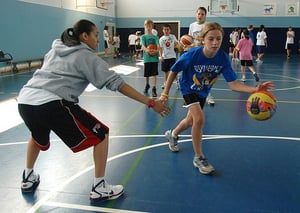Real Life Claims: A caregiver suffered a severely fractured wrist after rushing to the aid of a seizing, developmentally disabled teen wearing a bicycle helmet. As the women attempted to support the victim’s head, her wrist was slammed violently into the pavement. After several weeks of physical therapy and physician consultations, she continued to experience debilitating pain more than six months after the initial injury.
By The Numbers
According to the Epilepsy Foundation, epilepsy and seizures affect close to three million Americans. More than 300,000 people, 120,000 of which are children under the age of 18, have their first seizure each year. Additionally, 10% of the American population will experience at least one seizure in their lifetime.
 Seizures, which are misfired electrical signals to the brain, typically result in very little physical harm. Outside factors such as driving or swimming, however, can significantly impact the well-being of the seizing person and the people around them. Knowing how to identify and care for a seizure victim can be the difference between a mild medical episode and an absolute catastrophe.
Seizures, which are misfired electrical signals to the brain, typically result in very little physical harm. Outside factors such as driving or swimming, however, can significantly impact the well-being of the seizing person and the people around them. Knowing how to identify and care for a seizure victim can be the difference between a mild medical episode and an absolute catastrophe.
Seizure Types and First Aid
There are many types of seizures, each of which causes the body to respond differently. Successfully identifying the seizure type goes a long way in providing the proper first aid. These are the most common seizures you and your staff may come across in the workplace:
Tonic Clonic (grand mal) Seizures are the most common type of generalized seizure. Initially the body begins to stiffen, followed by the jerking of the limbs and face. As is the case with most seizures, tonic clonic seizures end naturally after only a minute or two. These are the key things you can do to help:
- Clear the surrounding area of anything sharp, hard, or otherwise dangerous.
- Provide a pillow or some form of padding for the head.
- Never attempt to stop or control a seizure by holding the victim other then to turn the person onto one side, which helps to keep the airway clear.
- Never try to force the mouth open. A person having a seizure CANNOT swallow their tongue.
Infantile Spasms are quick, sudden movements affecting children three months to two years old. If a child is sitting up, the head will fall forward, and the arms will flex forward. If lying down, the knees will be drawn up and the head and arms will flex forward as if reaching for support. No immediate first aid is required, but a doctor should be consulted.
In most cases, it’s unnecessary to call for emergency medical support during a seizure. However, if the seizure began in water, the person is pregnant, the seizure continues for more than five minutes, a second seizure begins after the first, or consciousness does not return after the shaking has stopped, call 911 immediately.
Prevalence in Special Populations
While epilepsy can affect anyone, individuals in certain populations are at higher risk. If you have exposure to any of these groups, it’s important to be prepared to provide treatment accordingly:
- 26% of children with mental retardation
- 13% of children with cerebral palsy
- 50% of children with mental retardation and CP
- 10% of Alzheimer patients
- 22% of stroke patients




